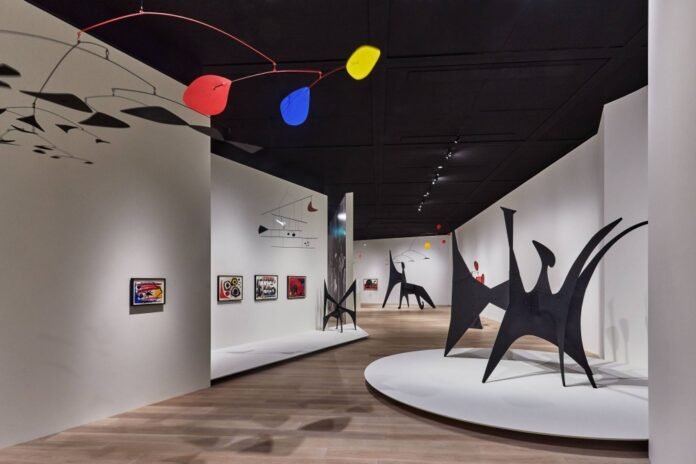At the entrance to the Azabudai Hills Gallery, visitors are currently greeted by a giant black-and-white photograph of sculptor Alexander Calder in his New York studio, next to two of his most famous works of art: “White Panel” and “Devil Fish,” which was currently under construction.
Calder stares directly into the lens, his outside gaze almost penetrating the viewer. A Francophile American, he was born in 1898 to artist parents – his father a sculptor and his mother a portrait painter – and died in 1976 at the age of 78. Posthumous exhibitions are always problematic in some sense, as the main celebrant is absent during the entire planning process.
But upon entering the 700 square meter exhibition space of the exhibition “Calder: Un effet du japonais” – where one is confronted with Calder’s abstract dragon-like standing mobile “Fafnir” (1968) – it does indeed seem as if the late, and undoubtedly the kinetic art’s most famous sculptor had something to say about the way this salute to self took shape.



